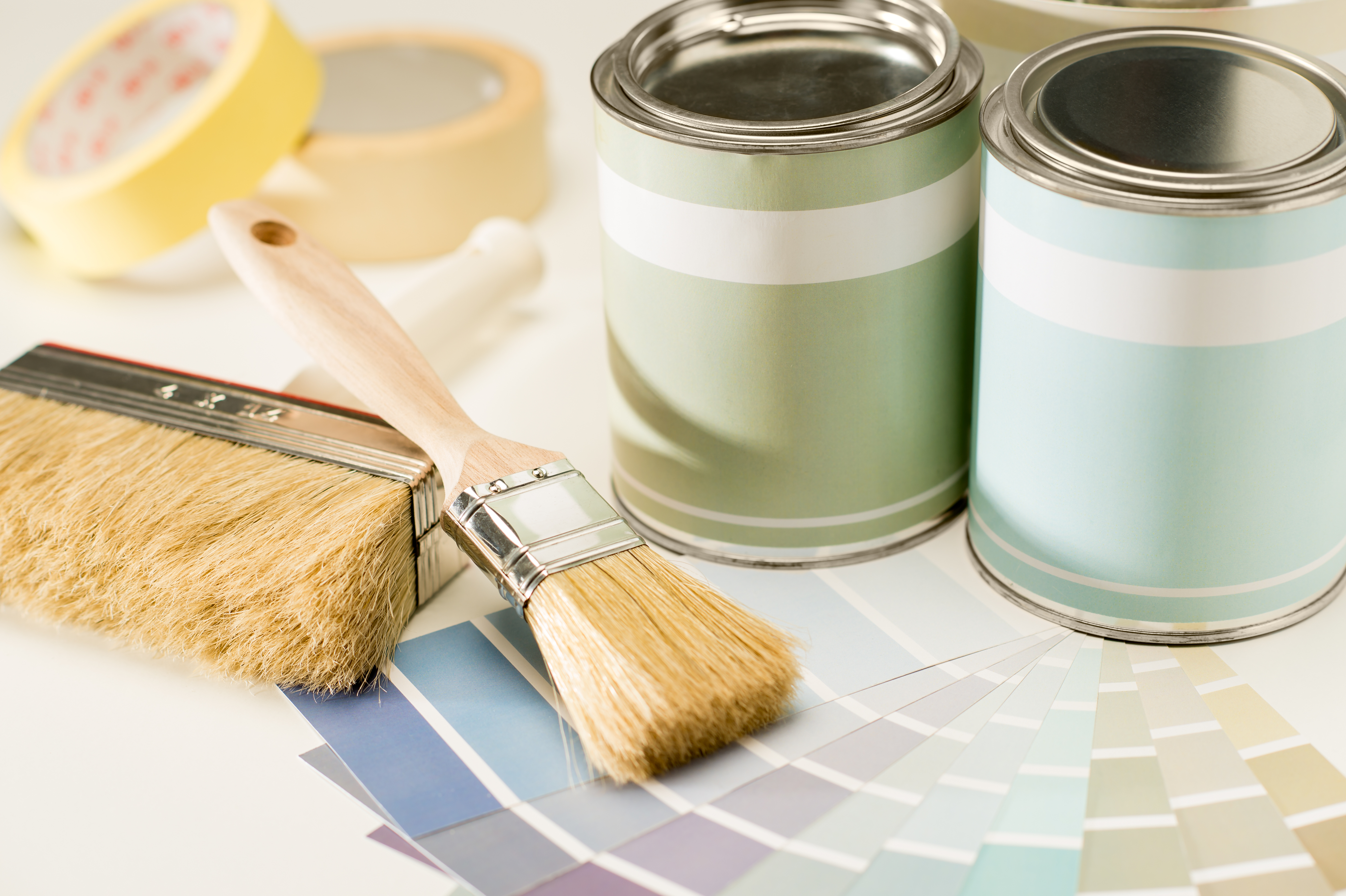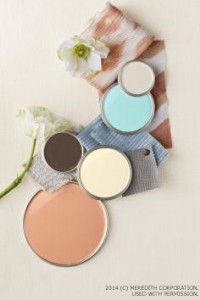better homes and gardens painting tips
Interior Design

One of the easiest and most low-cost ways to update your home's interior or exterior is a fresh coat of paint. A new color—or a simple touch-up of an existing hue—can undoubtedly enhance your home's value and curb appeal. If you're new to painting, or simply don't know where to start, use this list of tips as your go-to guide for changing your home's look and feel, both inside and out.

- Whether you plan to paint inside or outside your home, it's smart to try out colors before getting started Buy a quart or purchase a smaller sample, paint it onto cardboard, and hang it on the wall to see how it looks with its surroundings and in various lighting situations. Test decorative finishes the same way.
- A home's setting should affect your color choices. Shady areas make colors appear darker; lively colors can be too bright in well-lit areas. To play down a two-story home among single-story houses, paint the upper half or dormers a darker hue.
- Painting in cool weather? Use low-temperature exterior paint, which can tolerate temperatures as low as 35 degrees Fahrenheit within 24 to 48 hours of painting. Most paints handle temperatures only as low as 50 degrees Fahrenheit during curing.
- The right paintbrush is as critical to a good paint job as quality paint. For oil-based paint, China-bristle paintbrushes, which leave few brush marks, are a good choice, but the bristles might break when used on rough surfaces. For acrylics and high-quality latex paints, nylon paintbrushes are best. Nylon-polyester blends and 100-percent-polyester brushes work with any paint. Expect to spend at least $9 for a quality 3-inch paintbrush.
- For the best paint application, select a roller cover with the appropriate nap size. In general, the rougher the surface, the longer the nap required.
- Your home's front doors, the center of onlookers' attention, deserve special thought. In general, doors with high-gloss paint finishes look dramatic and punchy, while those with natural wood finishes are welcoming and warm.
- When stored properly, a can of paint lasts three to five years. Store paint between 60 and 80 degrees Fahrenheit and avoid placing cans on concrete floors, where they rust more quickly. Write on the can or affix a piece of tape to indicate the color of the paint, date of purchase, and how much paint remains in the can.
- Paint provides a quick fix for many decorating problems, including wood paneling, which seems to plague American basements. Here's how to paint paneling: Use a strong household cleaner to remove dirt or wax buildup on the paneling. Rinse off the cleaner, then dull the glossy paneling surface with sandpaper. Wipe it down with a damp rag, and coat the surface with stain-blocking primer. Let it dry overnight and top it off with a flat, satin, or semigloss latex.
- If you hire professional painters, ask about the brand of paint they use. If you have a brand in mind, make sure they're willing to use it. Quality and colors vary by brand, and even slight color differences among brands can be dramatic when applied to an entire house.
- To buy the right amount of paint, use this formula: add up the widths of the walls, then multiply that figure by the room's ceiling height and divide by 350 (the typical square footage one gallon covers). The result is roughly the number of gallons of paint you need. The formula doesn't account for windows and doors, so you should have plenty of paint for touch-ups. If you use a sprayer, a gallon covers about 250 square feet.
- Most paint failures come from poor surface preparation. Ensure a long-lasting paint job by taking time to assess the condition of your home's exterior and then washing, scraping, sanding, caulking, and treating stains as necessary.
- When hiring professional painters, look for licensed pros who have liability insurance and guarantee their work. Ask about painters' experience with your house style, peruse portfolios, and get references. Drive by homes they painted two or three years ago so you can see how the paint job has weathered. Look for drips, overspray on the roof and windows, and rough surfaces that reveal inadequate scraping and prep work.
- Honor a historically significant home's heritage by choosing era-appropriate hues, such as Valspar's American Tradition line.
- Consider these questions when matching colors to the character of your home: What elements do you like best about your home? Architectural features? Windows? Porches? What do you like least? Style? Size? Proportions? Answers to these questions will help you decide which elements to highlight, which areas to dress up with materials such as stone or shingles, and which areas to downplay with a darker hue.
- In 1978, the U.S. government banned lead as a paint ingredient because of its health risks, but most homes built before 1978—about 57 million of them—still have lead paint somewhere in them. There's little risk from paint in fine condition, but peeling and flaking lead paint is hazardous, especially to young children and pregnant women. Home test kits for lead paint are available, but the government recommends hiring professionals for accurate testing and safe paint removal. Call the National Lead Information Center at 800/424-5323 with questions and 800/532-3394 to request printed materials.
- Think of exterior color schemes in terms of threes: one color for the main body, a second color for the trim, and a third color for punch to accentuate doors and shutters.
- Paint can help cut energy costs. When applied under your roof deck, low-emissivity (low-E) paint can cut heat transfer by 5-8 percent, producing annual energy savings up to 15 percent. Try Sherwin-Williams' Radiance low-E attic and decking radiant barrier paint.
- Chalkboard paint transforms walls, floors, and tabletops into the perfect place to give kids' creative impulses free rein. The latex formula of chalkboard paint requires no special primers or sealers.
- Magnetic primer is an easy way to make walls interactive in kid-friendly spaces. Just apply the magnetic primer, wait until it's dry, and then add a top coat in the paint color of your choice.
- Before going in the garbage, cans of latex paint must be dried out. (Leave lids off to show garbage collectors that the paint is hardened.) Or, you can mix leftover latex paint with cat litter or shredded paper, let it dry, and then toss it in the trash. Ask your local solid-waste office about disposal programs for oil-based products, and find out whether there is a designated hazardous-waste collection day. Consider donating leftover paint to a local nonprofit organization or shelter.
- Metallics, pearlescents, translucents, and interference colors—shades that shift with varying light—are today's hip hues. These luminous pigments bring movement and emotion to lifeless surfaces.
- Using the right paint sheen is important.
Exteriors: Flats and satins are best for most siding surfaces. Semigloss and gloss paints work well for doors, windows, shutters, fences, and outdoor furniture. Porches, floors, and decks require special paint.
Interiors: Flats hide surface flaws but can be tough to clean, making them best in low-traffic areas. Satins are more luminous, easier to clean, and best suited for hall walls, baths, and some trims. Semigloss paints are easy to clean and a good choice for woodwork and walls subject to wear and tear. Gloss paints highlight surface flaws, but they do well on kitchen and bathroom walls, banisters, railings, cabinetry, windowsills, and some trim.
- If you have a unique color request, most paint centers can mix a custom hue to complement your favorite fabric swatch or artwork, often at no additional charge.
- Waterproofing paint turns concrete walls into water barriers. Available in oil, latex, or powder, waterproofing paint, such as UGL's Drylok, penetrates masonry pores and expands as it dries to become part of the wall. One gallon of Drylok covers about 75 square feet of surface area, and you'll need two coats: one applied by brush and another by roller. Drylok comes in white, gray, beige, blue, and some pastel tints; it can also be painted over with the latex hue of your choice.
- Oil and latex exterior paints require different drying times. Use the following guidelines to ensure a quality paint job:
Latex
Dry to touch: 2-3 hours
Safe for second coat: 4-5 hoursOil
Dry to touch: 4 hours
Safe for second coat: 24 hours
Adapted from Better Homes and Gardens. Used with permission. ©Meredith Corporation. http://www.meredith.com. All rights reserved.
better homes and gardens painting tips
Source: https://www.bhgre.com/bhgrelife/color-home-25-easy-economical-painting-tips/
Posted by: campbellhadeare.blogspot.com

0 Response to "better homes and gardens painting tips"
Post a Comment